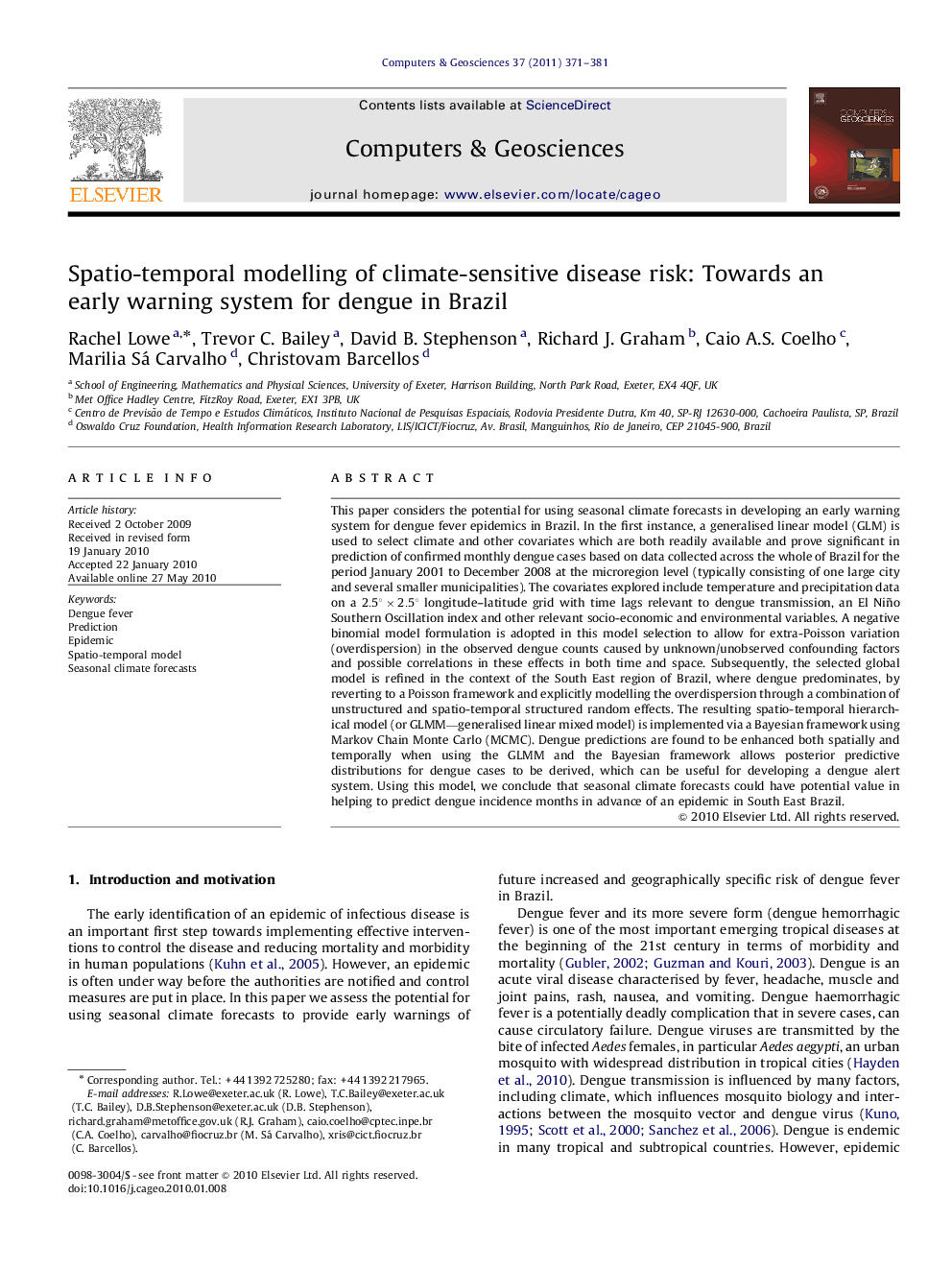| کد مقاله | کد نشریه | سال انتشار | مقاله انگلیسی | نسخه تمام متن |
|---|---|---|---|---|
| 507255 | 865107 | 2011 | 11 صفحه PDF | دانلود رایگان |

This paper considers the potential for using seasonal climate forecasts in developing an early warning system for dengue fever epidemics in Brazil. In the first instance, a generalised linear model (GLM) is used to select climate and other covariates which are both readily available and prove significant in prediction of confirmed monthly dengue cases based on data collected across the whole of Brazil for the period January 2001 to December 2008 at the microregion level (typically consisting of one large city and several smaller municipalities). The covariates explored include temperature and precipitation data on a 2.5°×2.5°2.5°×2.5° longitude–latitude grid with time lags relevant to dengue transmission, an El Niño Southern Oscillation index and other relevant socio-economic and environmental variables. A negative binomial model formulation is adopted in this model selection to allow for extra-Poisson variation (overdispersion) in the observed dengue counts caused by unknown/unobserved confounding factors and possible correlations in these effects in both time and space. Subsequently, the selected global model is refined in the context of the South East region of Brazil, where dengue predominates, by reverting to a Poisson framework and explicitly modelling the overdispersion through a combination of unstructured and spatio-temporal structured random effects. The resulting spatio-temporal hierarchical model (or GLMM—generalised linear mixed model) is implemented via a Bayesian framework using Markov Chain Monte Carlo (MCMC). Dengue predictions are found to be enhanced both spatially and temporally when using the GLMM and the Bayesian framework allows posterior predictive distributions for dengue cases to be derived, which can be useful for developing a dengue alert system. Using this model, we conclude that seasonal climate forecasts could have potential value in helping to predict dengue incidence months in advance of an epidemic in South East Brazil.
Journal: Computers & Geosciences - Volume 37, Issue 3, March 2011, Pages 371–381